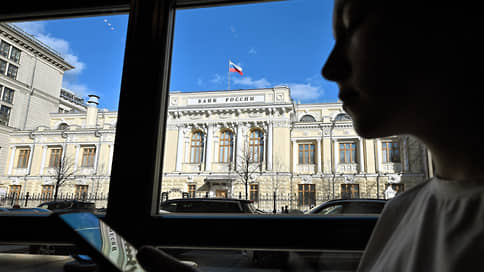Central Bank is dissatisfied with the low insurance component in the DSG

The Bank of Russia is unhappy with a low share of the insurance component in the sale of lifetime insurance policies (DSG), which sometimes is only 1%. This means that 99% of the awards received does not reserve for future payments to the insured, but invests. In this case, the combined policy of the DSG becomes almost completely investment. Insurers refer to the fact that customers themselves dictate this approach. Experts believe that with the growth of the segment, such a configuration of the DSG policy can increase the risks of insurance companies that will lack funds for mass payments for insured events.
The Central Bank is dissatisfied with cases of extremely low insurance component in shared life insurance (DSG). This was stated by the deputy chairman of the Bank of Russia Philip Gabunia at the conference of the All -Russian Union of Insurers on May 27. In particular, the regulator came across facts when the insurance component takes only 1% in the structure of the policy, and 99% falls on the investment part, and this approach was often implemented within the framework of one group. “When implementing the DSG, the PIF of the same group with a piece of insurance is sold. The client receives a product at a price more, as he pays for the insurance service. The owner of the group receives less profit, since he has to bear the cost of maintaining an additional unit, ”said Mr. Gabunia. He indicated that it was planned to « offer people a policy that does not come down exclusively to investments. »
1 billion rubles
It makes up the volume of lifetime insurance sold, according to expert estimates.
At the end of last year, in a letter to the All -Union Union of Insurers (VSS) and Nauphor Central Bank noted that both parts of this combined product – both insurance and investment – should be represented in the contract “in a significant volume”. In particular, according to the regulator, the inclusion of only risks with a low probability of occurrence (for example, as a result of a crash, train coating), as well as a significant list of exceptions from the insurance coating, do not correspond to the interests of consumers. “The BCC brought the recommendations of the Central Bank to the insurers about the need to follow them,” said Gleb Yakovlev, vice president of the Union.
From January 1, 2025, insurance companies got the opportunity to sell shared life insurance policies. In the case of acquiring such a policy, the policyholder independently invests in shares of open and closed Pyths, changes the structure of the portfolio, giving the corresponding instructions of the insurance company. According to experts, to date, the volume of sold policys of the DSG has exceeded 1 billion rubles.
As explains the general director of the business agency « Businessdr » Pavel Samiev, the insurance component refers to a part of the premiums that is sent to insurance reserves for insurance cases, while the investment part of the bonuses – in investment tools. At the same time, even a conservative portfolio can show low or negative yields and no one, of course, compensates for the loss of investment, he indicates.
At the same time, market participants do not deny the investment approach to the new product.
The company « Sberbelief of Life » noted that at the start they test « different grocery hypotheses, focusing on the interest of the client. » Including models with a predominance of the investment part, « since it is on the investment component that today there is high consumer demand. » The Renaissance of Life Insurance notes that “customers carry the risks of investing in the DSG,” while the company “focus on options with capital protection” itself.
Experts also note that by increasing the investment component of the policy, insurers expect to attract customers. “This allows you to advertise the high potential yield of the product,” said Nikita Evseenko, director of the Refusse Insurance Department. Thus, they directly compete with banks and investment companies for the money of these customers. According to the Central Bank, in the second decade of May, the average maximum rate on deposits of the largest banks was 19.5% per annum. At the same time, the profitability of the average and long-term issues of the OFZ, in which retail Pyaths are invested, is about 16% per annum, and the yield of cash market instruments that use BPPs exceeds 20% per annum.
At the same time, as the independent expert Andrei Barkhota notes, if the insurance component remains at a low level, “with the further growth of the entire segment, and therefore the growth of the probability of insured events, the market participants may not have enough funds to compensate all losses.”








